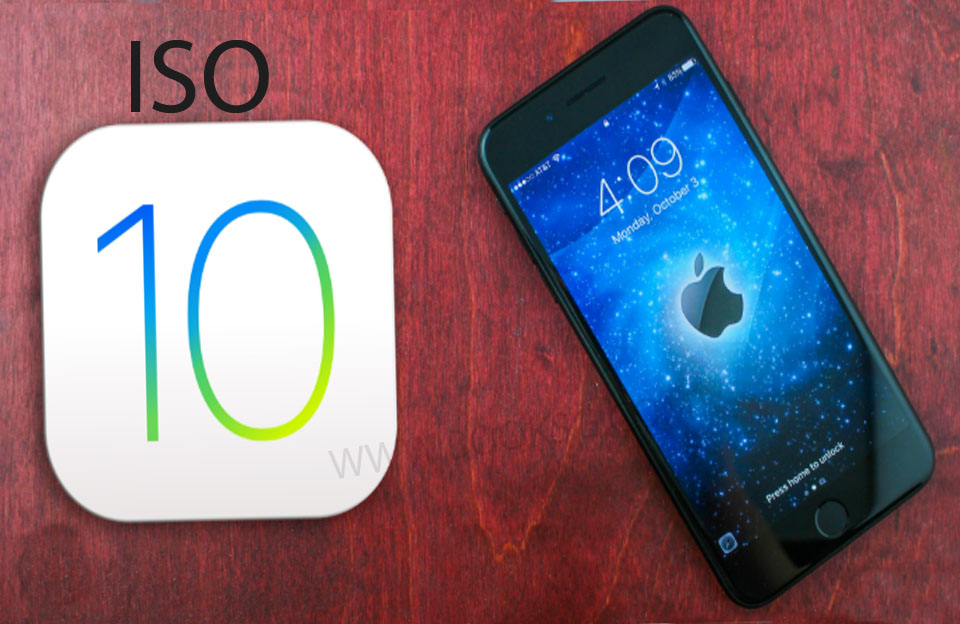iOS 10 was officially announced on June 13, 2016, at Apple’s WWDC 2016 and publicly released on September 13, 2016. It was a major evolution of the iOS platform, focusing on user expression, redesigned core apps, and opening up key parts of the system to developers—a major shift in Apple’s traditionally closed software philosophy.
iOS 10 dropped support for several older devices, including the iPhone 4s, iPad 2, iPad 3rd generation, iPad mini (1st gen), and iPod touch 5th generation, making the iPhone 5, iOS 14, and newer the oldest supported devices.
Lock Screen & Notifications: More Interactive Than Ever
Apple introduced a completely redesigned Lock Screen with expanded functionality:
- Raise to Wake allowed users to view the lock screen simply by lifting the device (supported on iPhone 6s and later).
- Rich notifications let users respond to messages, view media, or manage apps directly from the Lock Screen using 3D Touch.
- The Today View and Notification Center were streamlined, accessible via swipes from the left or top.
- Camera and widget access became faster with intuitive swipe gestures.
This made the iPhone’s first point of contact more powerful, efficient, and customizable.
Messages: Express Yourself Like Never Before
iOS 10 brought a massive update to the Messages app, transforming it into a fun, expressive, and app-enabled communication platform:
- Bubble effects added emotion to text messages (e.g., slam, gentle, invisible ink).
- Full-screen animations (e.g., balloons, fireworks, lasers) made celebrations more dramatic.
- Tapbacks allowed quick reactions (like thumbs up/down) to individual messages.
- Support for handwritten messages, digital touch, and sketches enhanced personal expression.
- Most notably, Apple launched the Messages App Store, allowing third-party stickers, games, and mini apps to run inside iMessage conversations.
Messages in iOS 10 became much more than just a texting platform—it was a social and creative tool.
Siri: Opened to Developers for the First Time
In a major shift, Siri was opened to third-party developers via the SiriKit framework, allowing users to interact with apps via voice commands for the first time.
Supported categories included:
- Ride booking (e.g., Uber, Lyft)
- Messaging (e.g., WhatsApp, WeChat)
- VoIP calling
- Photo search
- Workouts
- Payments
Though limited to specific domains, this move laid the foundation for Siri as a broader assistant platform.
Home App: Centralized Smart Home Control
iOS 10 introduced the Home app, a centralized interface for managing HomeKit-enabled smart home devices:
- Users could control lights, locks, thermostats, cameras, and sensors from a single location.
- Scenes allowed for automated combinations of actions, such as “Good Night” turning off lights and locking doors.
- Integration with Siri made voice control seamless.
This helped establish Apple’s ecosystem within the growing smart home market.
Photos: Intelligent Memories and Face RecognitionThe Photos app was upgraded with on-device intelligence for better organization and discovery:
- Introduced Memories, automatically generated slideshows and collections based on people, places, or events.
- Facial recognition grouped people for easier browsing.
- Object and scene recognition enabled advanced search (e.g., “beach,” “dog,” “birthday cake”).
- All processing was done on-device, reflecting Apple’s privacy-first approach to machine learning.
This transformed Photos into a more intelligent and proactive library.
Apple Music, News, and Maps: Major Redesigns
Several system apps were completely redesigned:
- Apple Music received a cleaner interface with larger artwork, better organization, and a dedicated “For You” section with daily curated playlists.
- Apple News introduced subscriptions, personalized topic tracking, and clearer navigation.
- Apple Maps gained proactive suggestions, improved navigation, dynamic zooming, traffic indicators, and third-party app integration via extensions.
These redesigns focused on usability, clarity, and integration with the broader iOS ecosystem.
Phone and Voicemail Improvements
- Apple added VoIP call integration into the Phone app, allowing third-party calling apps (like Skype or WhatsApp) to behave like native calls.
- Voicemail transcription (beta) allowed users to read transcribed versions of voicemail messages.
- Spam call identification and blocking APIs were introduced to help filter unwanted calls.
These upgrades brought the Phone app into the modern era of communication.
Other Notable Features
- Control Center was split into multiple panes, with music controls moved to a separate swipeable card.
- Universal Clipboard allowed users to copy text or content on one Apple device and paste it on another using Continuity.
- Delete stock apps: Users could now remove default apps like Mail, Music, and Calendar (though not fully uninstall them).
- QuickType enhancements: Siri-powered suggestions in the keyboard included contextual dates, locations, contacts, and more.
iOS 10.x Updates: Steady Improvements
- iOS 10.1: Introduced Portrait Mode (beta) for iPhone 7 Plus with dual cameras.
- iOS 10.2: Added the TV app (U.S. only), over 100 new emoji, and emergency SOS (on iPhone 7 and later).
- iOS 10.3: Transitioned the file system to APFS (Apple File System) and added Find My AirPods to the Find My app.
- iOS 10.3.2–10.3.4: Focused on performance, bug fixes, and security patches.
In Summary
iOS 10 was a feature-rich and expressive release that opened new doors for user interaction, developer access, and system intelligence. It made iMessage a platform, opened Siri, introduced the Home app, and modernized core apps like Music and Maps. While not without controversy (such as the split Control Center and early bugs), iOS 10 laid the groundwork for many of the personalization and integration features that define modern iOS today.
1. When was iOS 10 released?
Apple announced iOS 10 at WWDC in June 2016 and officially released it to the public on September 13, 2016. It launched alongside the iPhone 7 and iPhone 7 Plus. As with most Apple updates, it first appeared in beta for developers and public testers before rolling out widely.
2. Which devices supported iOS 10?
iOS 10 supported a wide range of devices starting from the iPhone 5 up to the iPhone 7 series. It also worked on the 6th generation iPod touch, iPad mini 2 and newer, iPad 4th generation, iPad Air, iPad Air 2, and both generations of iPad Pro. Older models like the iPhone 4s and iPad 3rd generation were dropped, making iOS 10 a turning point in Apple’s support timeline.
3. What was new in the lock screen?
The lock screen was redesigned in iOS 10. Apple removed the traditional “Slide to Unlock” and replaced it with “Press Home to Unlock.” Notifications became richer with 3D Touch, allowing users to interact with messages and apps without opening them fully. Widgets were also integrated into the lock screen for quick access to information like weather, news, and calendar events.
4. What improvements came to Messages?
The Messages app was one of the biggest highlights of iOS 10. It introduced stickers, larger emoji, digital touch messages, and handwritten notes. iMessage also gained rich links, inline previews, bubble effects, and a new App Store for adding third-party extensions, making chats more expressive and interactive.
5. How did Siri improve in iOS 10?
For the first time, Apple opened Siri to third-party apps. This meant users could ask Siri to send messages through apps like WhatsApp, request a ride with Uber, or make payments with supported apps. Siri also gained smarter contextual awareness, offering more relevant suggestions based on user behavior.
6. What was new in Photos?
The Photos app received advanced object and scene recognition, allowing it to automatically categorize images by people, places, and objects. A new Memories tab created curated photo collections with background music. Apple also enhanced editing tools, making Photos more competitive with third-party gallery apps.
7. What changes were made to Maps?
Maps in iOS 10 was redesigned with a cleaner interface and proactive suggestions. It could recommend destinations based on calendar events or frequent locations. For the first time, Apple allowed third-party extensions, so users could book restaurant reservations or rides directly within Maps. Navigation was also improved with real-time traffic updates.
8. How was Apple Music updated in iOS 10?
Apple Music got a major overhaul with a simpler, bolder design. The interface emphasized large fonts and album artwork, making it easier to browse. The “For You” section became smarter at curating playlists, while lyrics integration was added so users could sing along directly within the app.
9. What about Home and other new apps?
iOS 10 introduced the Home app, which allowed users to control HomeKit-enabled smart devices like lights, locks, and thermostats from one place. It also redesigned News, Phone, and Apple Music apps, making them more modern and user-friendly. The Phone app gained voicemail transcription and third-party VoIP integration.
10. How was performance and reception of iOS 10?
iOS 10 was praised for its feature-rich updates and refreshed design, but it faced criticism for battery drain on some older devices. The removal of “Slide to Unlock” took some users time to adjust, but the new Messages features and Siri improvements were widely welcomed. Overall, iOS 10 set the stage for Apple’s focus on personalization and smarter AI-driven features in future releases.




Pingback: iOS: The Evolution of Apple’s Mobile Operating System - Mobile Updates Hub | New Phones, Software, and Tips
Pingback: iOS 12: Speed, Stability, and Screen Time Awareness – Mobile Updates Hub | New Phones, Software, and Tips